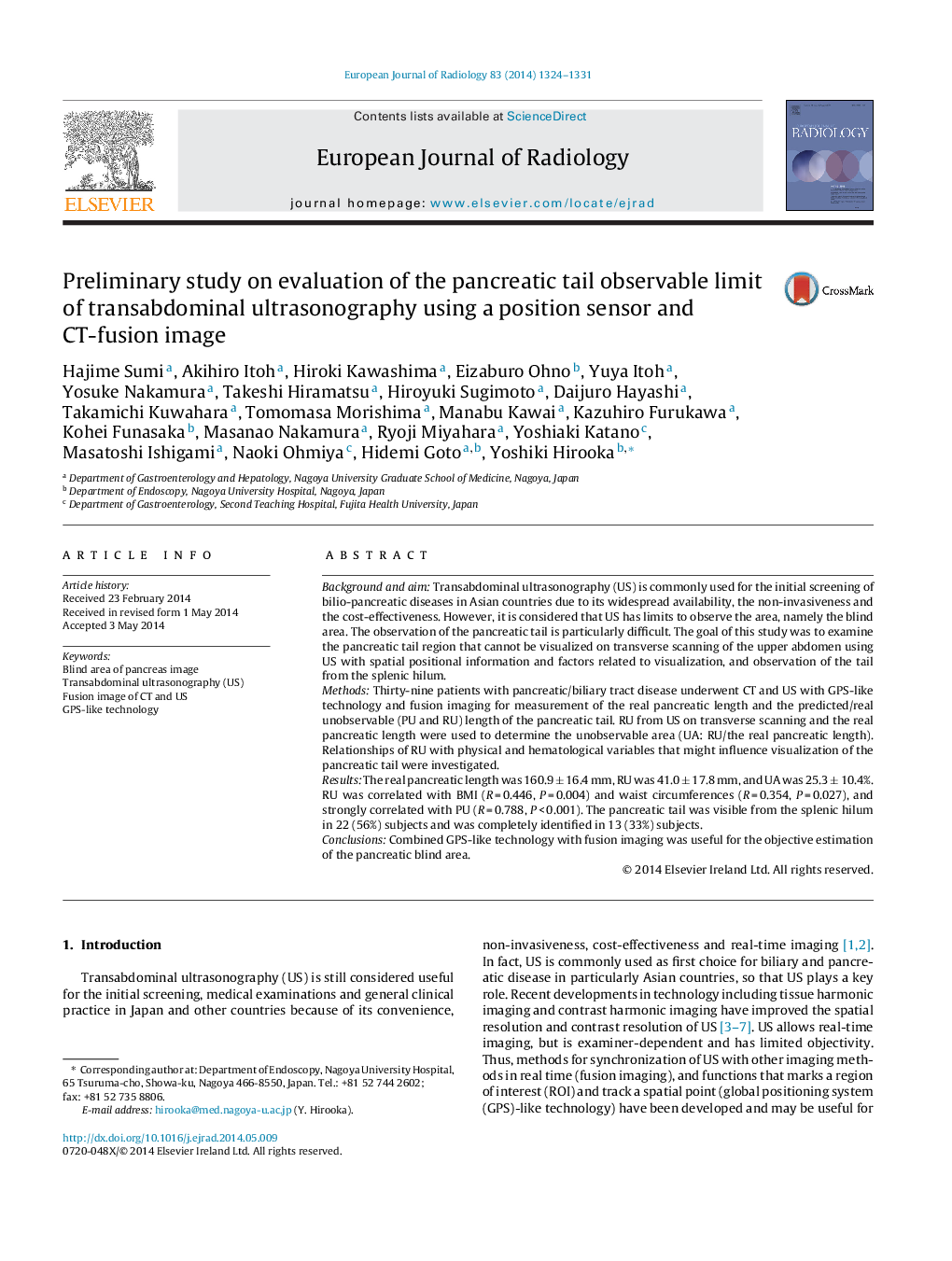| کد مقاله | کد نشریه | سال انتشار | مقاله انگلیسی | نسخه تمام متن |
|---|---|---|---|---|
| 4225197 | 1609763 | 2014 | 8 صفحه PDF | دانلود رایگان |

Background and aimTransabdominal ultrasonography (US) is commonly used for the initial screening of bilio-pancreatic diseases in Asian countries due to its widespread availability, the non-invasiveness and the cost-effectiveness. However, it is considered that US has limits to observe the area, namely the blind area. The observation of the pancreatic tail is particularly difficult. The goal of this study was to examine the pancreatic tail region that cannot be visualized on transverse scanning of the upper abdomen using US with spatial positional information and factors related to visualization, and observation of the tail from the splenic hilum.MethodsThirty-nine patients with pancreatic/biliary tract disease underwent CT and US with GPS-like technology and fusion imaging for measurement of the real pancreatic length and the predicted/real unobservable (PU and RU) length of the pancreatic tail. RU from US on transverse scanning and the real pancreatic length were used to determine the unobservable area (UA: RU/the real pancreatic length). Relationships of RU with physical and hematological variables that might influence visualization of the pancreatic tail were investigated.ResultsThe real pancreatic length was 160.9 ± 16.4 mm, RU was 41.0 ± 17.8 mm, and UA was 25.3 ± 10.4%. RU was correlated with BMI (R = 0.446, P = 0.004) and waist circumferences (R = 0.354, P = 0.027), and strongly correlated with PU (R = 0.788, P < 0.001). The pancreatic tail was visible from the splenic hilum in 22 (56%) subjects and was completely identified in 13 (33%) subjects.ConclusionsCombined GPS-like technology with fusion imaging was useful for the objective estimation of the pancreatic blind area.
Journal: European Journal of Radiology - Volume 83, Issue 8, August 2014, Pages 1324–1331